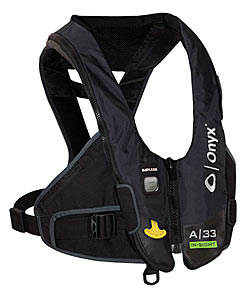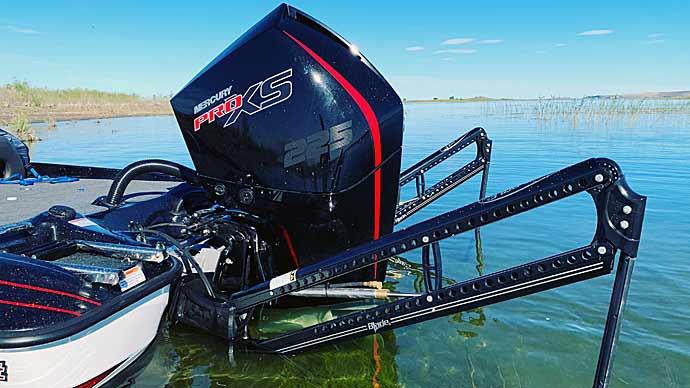
Tai Au, an avid tournament bass angler and an agent for Liberty Mutual Insurance, has been following the news about the missing angler in Florida carefully. Because he is one of the founders of a massive Facebook page for anglers (AZ Anglers), he sees hundreds of daily posts. Frankly, he is appalled and concerned by the misinformation about life jackets.
“Six or seven years ago, I bought my brother a life jacket for his birthday,” says Tai. “It was an inflatable, and I saw two models: one was $180, and one was $120. I didn’t know the difference, so I got the cheaper one. Then my brother got stopped on the water and almost got a ticket for not having a life jacket on board. It turns out the inflatable I got him was what used to be called a Type V, which means it doesn’t count unless you’re wearing it.” There are different types of inflatable vests, just as there are for life jackets, but Type V pertained only to inflatables. In 2014, the U.S. Coast Guard dropped the type codes for PFDs (Personal Floatation Devices) because people didn’t understand them. But many life jackets still have the Type labeling.
The highest performing PFDs, whether foam or inflatable, are designed to help you float face up, even if you are unconscious. These used to be called Type II. Some wearable PFDs are not designed to keep your face up. These are swimmer-assisted life vests or floatation aids. These were previously called Type III. The lower the Type number, the better the performance. Tai wears an Onyx Impulse A-33 In-Sight Automatic Inflatable Life Jacket. This one retails for $289. It has mesh in areas that contact you and will fit up to a 65-inch chest. Since it’s what would be a Type II, it will help keep your face out of the water even if you are knocked out.

The new USCG rules define a PFD as a device that is USCG approved under law. A throwable PFD is intended to be thrown to a person in the water, and a wearable PFD is intended to be worn or attached to your body. On a recreational vessel 16 feet or longer, you must have a PFD for every person on board, plus a throwable. Each PFD must be used as stated in the requirements printed on the label. The exception is that canoes and kayaks, even if they are longer than 16 feet, don’t have to carry a throwable, and some racing vessels and sailboards don’t have to carry PFDs. But for recreational fishermen, the law is clear: have and use PFDs. Wearables must be readily accessible, and throwables have to be immediately accessible.
Most tournament rules state that you need to wear a vest when the big motor is on, and the boat is underway, but a comfortable inflatable can be worn all day long, which keeps you safer and saves you time. And in a tournament, time is money. Tai says one thing you need to remember about inflatables needs to be serviced. The CO2 cartridge needs to be replaced when necessary (about $30). He says the easiest thing is to get a vest with an indicator. As long as the indicator is green, you’re good to go. Red – replace the cartridge.
The stats on boating deaths are sobering. In 2016 there were almost 4,500 recreational boating accidents, with 701 deaths. That number of deaths was up 12% from 2015. 80% of these deaths were from drowning, and 83% of those were NOT wearing a life jacket. Also, 80% of drowned boaters were using boats less than 21 feet long. The top five factors in these accidents were operator inattention, inexperience, improper lookout, excessive speed, and machinery failure.

Collisions with other boats, collisions with fixed objects, flooding or swamping, running aground, and capsizing were the major types of accidents, but capsizing resulted in the most deaths. You never know if some yahoo will come zooming out of that next cove and run into you, or you could hit a barely submerged tree stump at 70 mph. Storms can come up suddenly, and large waves can capsize your boat or wash you overboard. As Tai says, hitting the water at 40 mph is like hitting concrete – you could be knocked out and drowned before anyone can get to you. Be aware that some inflatables do not automatically inflate when you hit the water – you must pull a cord. Also, if the auto inflate fails, there is a cord as a backup.
As recreational boaters and anglers, we are responsible to ourselves and the people on our boats to be as safe as possible. 77% of deaths occurred on boats where the operator had never received any safety instruction. You can find safe boating courses online for free, so there is no excuse for not taking one. Just go to boatus.org and pick your state. You may even get a boat insurance discount after taking the course.
We can’t eliminate risk, but we can certainly minimize it by operating our boats safely, wearing the proper gear, and insisting that our passengers also wear proper gear. When you shop for a PFD, read the back, so you know what it is designed for and how to use or wear it, and remember that one designed to keep your face out of the water will have a substantial collar or flap on the back of the neck. It may still be labeled as a Type II. Try on some PFDs and choose the best one you can afford that is the most comfortable because the best PFD is the one you have on when you need it. Let’s be safe, so a fishing trip doesn’t become a tragedy.




